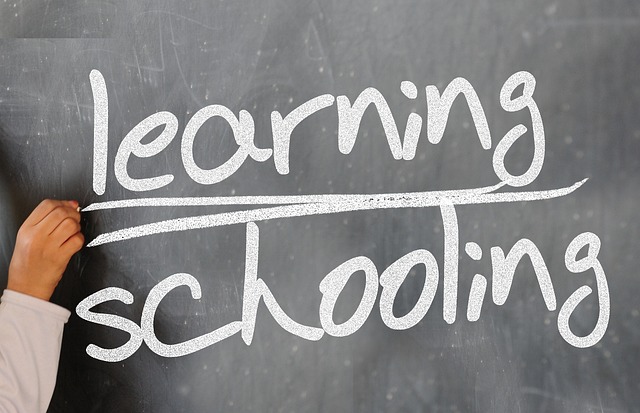On-Page Optimization Training is crucial for digital strategy, focusing on enhancing user engagement through intuitive, visually appealing, and SEO-aligned web pages. This involves optimizing meta titles, headings, content, loading times, mobile responsiveness, and navigation to create a positive user experience (UX) that signals search engines of the page's value. By mastering best practices, content creators can integrate keywords naturally, improve UX with high-quality content, visuals, and clear navigation, and ensure Technical SEO considerations like speed and mobile-friendliness. Measuring success through tools like Google Analytics and Search Console is vital for refining content and driving organic traffic.
In today’s digital landscape, on-page UX and SEO are vital components of any successful website strategy. This comprehensive guide offers an in-depth exploration of these critical elements, equipping you with the knowledge for effective optimization. From understanding the user experience foundation to implementing best practices in interface design, this article covers essential aspects of on-page optimization training. Learn how SEO plays a pivotal role in content strategy and discover technical considerations for enhanced performance.
Understanding On-Page UX: The User Experience Foundation

On-Page UX is the cornerstone of any successful digital strategy, providing a user-friendly and optimized experience that drives engagement and conversions. It involves crafting web pages that are intuitive, visually appealing, and strategically aligned with search engine algorithms. By focusing on the user’s journey from landing to interaction, On-Page Optimization Training equips professionals with the skills to enhance every element of a page—from content structure to visual design and interactive elements.
This foundation begins with understanding user behavior and needs through analytics and testing. It involves optimizing essential factors like meta titles, headings, and content to ensure relevance and keyword richness. Additionally, ensuring fast loading times, mobile responsiveness, and easy navigation contributes to a positive user experience, signaling to search engines that the page is valuable and worthy of high rankings.
The Role of SEO in On-Page Optimization

Search Engine Optimization (SEO) plays a pivotal role in on-page optimization, ensuring that websites are not only user-friendly but also search engine-friendly. Effective SEO strategies for on-page optimization involve understanding and incorporating relevant keywords naturally into content, optimizing meta tags for accuracy and clarity, and enhancing the overall structure of web pages to facilitate easy navigation. This includes proper heading hierarchy, internal linking, and optimized images with alt tags.
On-Page Optimization Training is crucial in equipping individuals with the skills to balance user experience and search engine rankings. By learning best practices in SEO, content creators can craft engaging, informative content that resonates with audiences while also adhering to the ever-evolving algorithms of major search engines. This dual focus ensures that websites not only attract visitors but also keep them engaged, thereby reducing bounce rates and improving key metrics for overall digital success.
Essential Elements for Effective On-Page Content Strategy

Creating an effective on-page content strategy is crucial for both user experience (UX) and search engine optimization (SEO). At the heart of this strategy lie several key elements that, when thoughtfully integrated, can significantly enhance your website’s performance. One such element is keyword research, which involves identifying relevant terms and phrases that your target audience uses to search for information related to your content. Incorporating these keywords naturally into your titles, headings, meta descriptions, and throughout the body of your pages not only aids in SEO but also ensures your content resonates with your audience.
Another vital component is creating high-quality, engaging content that offers genuine value to visitors. This means crafting compelling copy that addresses user intent, whether that’s informing, persuading, or entertaining. Supporting this content with relevant visuals, such as images, infographics, and videos, can significantly boost UX by making pages more visually appealing and easier to understand. Additionally, optimizing page load speed, ensuring mobile responsiveness, and implementing clear navigation are essential practices for on-page optimization training that contribute to a seamless user journey and encourage longer stays on your site.
Technical SEO Considerations for On-Page Performance

In the realm of on-page UX and SEO, Technical SEO considerations play a pivotal role in enhancing website performance and user experience. A robust on-page optimization strategy includes addressing essential technical aspects such as site speed, mobile-friendliness, schema markup implementation, and URL structure optimization. These factors significantly impact search engine rankings and contribute to a seamless user journey. By investing in comprehensive On-Page Optimization Training, professionals can gain insights into best practices for improving page load times, ensuring responsive design across devices, and structuring content in a way that’s easily indexable by search engines.
Effective Technical SEO strategies facilitate better crawling and indexing processes, allowing search engine algorithms to understand the context and relevance of web pages. This, in turn, leads to improved click-through rates, reduced bounce rates, and higher search rankings. Moreover, addressing technical issues early on prevents future complications and ensures a solid foundation for ongoing SEO efforts, ultimately driving organic traffic and enhancing overall website performance.
Best Practices for Optimizing User Interface and Navigation

When it comes to best practices for optimizing user interface and navigation in on-page optimization training, simplicity and intuitiveness are key. A clean, uncluttered design ensures users can effortlessly navigate through a site, improving their overall experience. Incorporate clear call-to-actions (CTAs), well-designed menus, and consistent layout structures to guide users towards the content or actions they desire. Utilizing familiar navigation patterns will make your website more user-friendly and enhance engagement.
Additionally, on-page optimization training emphasizes the importance of semantic HTML and meaningful metadata. Properly structuring content with relevant headings, alt tags for images, and meta descriptions not only benefits users with improved accessibility but also signals to search engines what your page is about. This strategic approach ensures that both users and search algorithms can easily understand and interpret the information presented on your website.
Measuring and Analyzing On-Page Optimization Success

Measuring and analyzing on-page optimization success is a crucial step in any digital marketing strategy. By utilizing tools like Google Analytics, Search Console, and SEO-focused software, marketers can gain valuable insights into the effectiveness of their on-page optimizations. These platforms provide data on keyword rankings, click-through rates (CTR), user engagement metrics, and more, enabling professionals to understand which elements of their content are resonating with search engines and users alike.
On-Page Optimization Training is essential for staying ahead in today’s competitive digital landscape. Understanding how to interpret these analytics allows marketers to make data-driven decisions, continually refining their strategies to improve rankings and drive organic traffic. Regularly reviewing and optimizing content ensures it remains relevant and effective, ultimately enhancing the overall user experience and search engine visibility.
